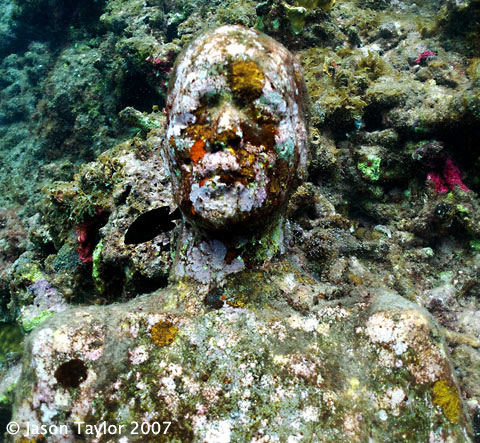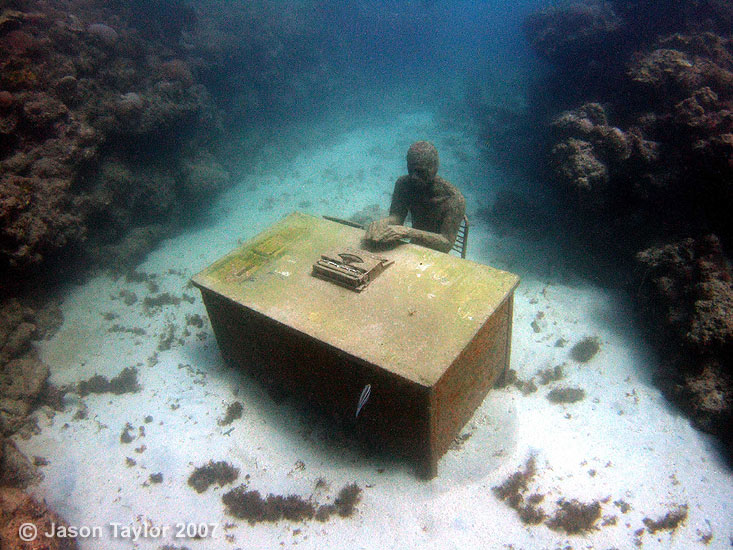There are communities in the Southwest still suffering from the effects of the uranium mining from the nuclear boom of the 1940′s – 1980′s (more below). But, when nuclear proponents tout the idea that nuclear energy is the clean energy savior for the planet, it is pretty convenient to ignore the community health disaster that uranium mining inevitably brings along. I wish it were more suprising to hear this:
On public lands within five miles of Grand Canyon National Park, there are now more than 1,100 uranium claims, compared with just 10 in January 2003, according to data from the Department of the Interior. [...] In the five Western states where uranium is mined in the U.S., 4,333 new claims were filed in 2004, according to the Interior Department; last year the number had swelled to 43,153.
The push to extract more uranium has caused controversy not just involving federal land but private and state land as well. In Virginia, a company’s plan to operate in a never-mined deposit spurred a hearing in the Legislature. In New Mexico, a Navajo activist group is challenging in federal court a license issued just over the reservation’s east border.
Most of the new claims are in the vicinity of the Grand Canyon:
Uranium is “a special concern,” he added, because it is both a toxic heavy metal and a source of radiation. He worries about uranium escaping into the local water, and about its effect on fish in the Colorado River at the bottom of the gorge, and on the bald eagles, California condors and bighorn sheep that depend on the canyon’s seeps and springs. More than a third of the canyon’s species would be affected if water quality suffered, he said.
“If you can’t stop mining at the Grand Canyon, where can you stop it?” asked Richard Wiles, executive director of the Environmental Working Group.
The energy-versus-environment debate is apparent within the Interior Department, which granted the mining claims through its Bureau of Land Management. Among the mining critics is Steve Martin, superintendent of the Grand Canyon park and an Interior Department employee himself. “There should be some places that you just do not mine,” Martin said.
I wonder which places he thinks you should mine? Here is a look at a Tufts student’s research on the Navajo Nation’s experience with uranium mining:
In North America, many people think of clean drinking water and uncontaminated land as a birthright. For members of Navajo Nation, access to these basic needs isn’t as easy to come by. An area the size of West Virginia sandwiched between Arizona and New Mexico, the Navajo reservation’s austere land of buttes and mesas is beautiful but burdened by toxic waste. Forty years of uranium mining has created an environmental justice nightmare that scientists and researchers like Jamie deLemos are working to redress.
deLemos, an environmental health doctoral candidate at Tufts School of Engineering and a student in the Water: Systems, Science, and Society program, has been working with engineering associate professor, John Durant, and Tufts Public Health and Family Medicine’s Doug Brugge as part of a large-scale project to understand the health impacts of uranium mining.
Uranium contamination on the Navajo Nation is the result of mining operations conducted during the boom of the atomic age in the 1940s through the 1980s. Many Navajos employed in the uranium mines were directly exposed to high levels of radiation toxicity from mining, but also indirectly from environmental exposures created by residual waste. As miners extracted uranium from the ore, leftover tailings–accumulated waste material from extraction and processing activities–open pits, and mine shafts dotted the landscape.
In July 1979, in Church Rock, NM, millions of gallons of low-level radioactive waste burst from a dam and contaminated the surrounding watershed of New Mexico and Arizona. Almost 30 years later, the U.S.EPA and Navajo Nation EPA are working to clean up these since-abandoned mines, and epidemiological researchers are assessing the extent of the health risk.
Although uranium is often associated with radiological toxicity, it is much more hazardous from a chemical toxicity standpoint. “Uranium is a kidney toxin. Kidney disease is three times higher among the Navajo (or Diné) people than in the general U.S. population,” deLemos said. Her information comes from working on a large community based-participatory research project called the Diné Network for Environmental Health, or DiNEH project. Along with Dr. Johnnye Lewis, director of University of New Mexico’s Community Environmental Health Program, and members of the Eastern Navajo Health Board, the project team has been studying the effects of toxic exposures on the Navajo Nation. Through work on this project, deLemos was named one of this year’s Switzer Environmental Fellows by the Robert & Patricia Switzer Foundation.
As part of Lewis’ team, deLemos uses her environmental health and geochemistry skills to address the extent of uranium contamination, to discover the chemistry that controls uranium transport in water and soil, and to identify areas at high risk for uranium exposures. In March 2006, deLemos and fellow graduate student Naomi Slagowski traveled to New Mexico to obtain 150 samples, including soil, water and vegetation from a heavily burdened mining area. deLemos and Slagowski worked with Tommy Rock, a Navajo and Northern Arizona University graduate student.
“Some people, because of the historical abuses–of which there are many–are not interested in letting you on their land,” said deLemos. “They’ll say, ‘How are you different from other researchers who’ve come and done nothing to change things for us or never come back and report what you’ve found?’” deLemos worked with Rock who translated the language and helped foster trust with community members. “People automatically accepted him through clanship and his Navajo language skills; and when he was with us, we were okay.”
As part of her geochemical assessment, deLemos worked with former mentor and geochemist Benjamin Bostick at Dartmouth College. Using a combination of laboratory and x-ray spectroscopic techniques, she evaluated the chemical form of uranium in contaminated sediments and how soluble these forms are. “One state is soluble and one isn’t,” said deLemos. “And the soluble form is much more toxic.” In 2000, the U.S. EPA issued the Radionuclides Rule, which set the maximum contaminant level safety standard at 30 micrograms per liter of drinking water. “What my data show is that when contaminated sediments are wet, the amount of uranium that dissolves into the water can exceed this rule by more than a factor of 100,” said deLemos. “This has serious implications for contaminating groundwater supplies.”
“People still haul water even if they’re on a public water supply, either for cultural reasons, or because they prefer the taste,” said deLemos. However, the Navajo Nation has deemed any unregulated water supplies unfit for human consumption, even though chemical and bacteriological analysis haven’t, as of yet, been systematically performed on all wells. “All water sources that have been tested are given a rating with a stop-light system, and everything unregulated is given a yellow or a red light,” deLemos said. “When people who are hauling water see this, it’s a little confusing. It’s hard for people to give up what they’ve been doing their whole lives–and when you can’t provide them with an acceptable alternative, it’s a real challenge.”
Providing clear information, and possible alternative water sources, perhaps in an easy-to-read map, is the next phase of deLemos’ project. “Historically, there’s been a lot of recommendations and no offer of alternatives and no follow up,” said deLemos, adding that in the past other researchers have issued statements such as, “‘We recommend that for your livestock, you don’t eat kidney or liver,’ but they eat the whole sheep as part of the culture,” deLemos said. “Or ‘We recommend you stay off the banks of the river.’ Well, that’s like telling someone around Boston to stay off of 95.”
After presenting her current research to the community at this summer’s 4th Annual Navajo Nation Drinking Water Conference hosted by the Navajo Nation EPA, deLemos realized that Navajos need straightforward answers.
“People have basic questions: Are my livestock going to get sick if they eat this grass? Can I take water from this well or pond? You have to balance between cutting-edge science and something that’s actually going to be immediately useful and relevant to these impacted communities.”
Profile written by Julia C. Keller, Communications Specialist, Tufts School of Engineering
[Grist, LATimes, Tufts E-News]




















